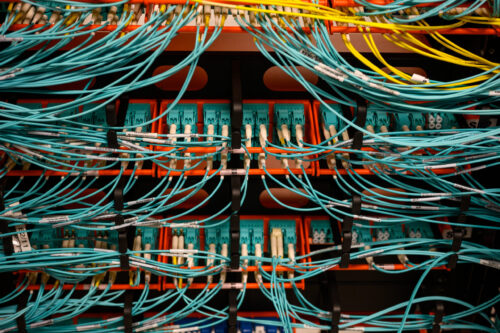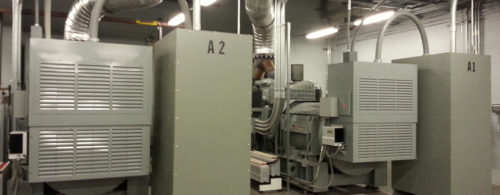Basics of plant radio systems
Wireless communications have become so commonplace in industrial plants that they are often taken for granted. But rapid advances in technologies and capabilities make periodic reviews of radio systems a smart move.
Wireless communications have become so commonplace in industrial plants that they are often taken for granted. But rapid advances in technologies and capabilities make periodic reviews of radio systems a smart move.
Much of today’s radio equipment is designed to allow for future upgrades. Portable radios may work on both analog and digital systems. Conventional systems can be converted to trunked systems. And small, single-site systems can be expanded to cover entire regions, even countries.
Here are some of the basics that should be understood and considered before jumping into a new or upgraded plant radio system.
Plant Engineering appreciates the assistance of Motorola, Inc., in the preparation of this article.
Frequencies
Frequencies used for industrial radio systems are set by the Federal Communications Commission. Therefore, they are seldom a major factor in system specification. Examples of frequency bands set aside for industrial use are 30-50 mHz, low-band industrial two-way radio; 178-184 mHz, high-band industrial two-way radio; 450-470 mHz, industrial two-way radio; 806-820 mHz, commercial and industrial two-way radio; and 920 mHz, industrial data transmission.
In general, very high frequency (VHF) channels are good for long ranges with minimal physical interference, such as rural areas. Ultra high frequency (UHF) channels are shorter range, but provide better performance in and around buildings, as in urban areas.
Users and buyers should be aware of a major change scheduled for implementation by 2005. It’s called refarming, and involves a change from wideband to narrowband technology.
Frequencies are currently assigned using 25-kHz channel centers. That is, frequencies are assigned in bandwidths of 25 kHz. This range is commonly referred to as wideband. There is a migration, however, to narrowband technology, which is based on 12.5-kHz channel centers.
In a few years, all radio communications in the industrial sector will be narrowband. Because of this change, plant engineers buying radio equipment now should make sure that it will operate on 12.5-Hz centers as well as 25-Hz centers.
Information regarding radio frequency assignments is available from the National Telecommunications & Information Administration (NTIA) at www.ntia.doc.gov/osmhome/osmhome. html.
The “plexes”
Simplex
This type is the most basic kind of radio system, operating on a single frequency and allowing transmission in only one direction. It is sometimes called one-way operation.
Definition is often expanded to mean transmission in two directions, but in only one direction at a time. Users cannot talk and listen at the same time.
Citizens Band (CB) radios are a familiar example of simplex communications.
Half-duplex or semiduplex
This type uses two frequencies to allow transmission alternately in each direction. Transmission is on one frequency; reception is on another.
Typically, mobile or portable units cannot talk to each other, only to the “base” unit. The base operator can hear everyone, and transmits to everyone simultaneously.
Taxicab dispatch systems are common examples.
Duplex or full-duplex
These circuits permit transmission in both directions. Full-duplex permits simultaneous transmission in both directions.
Duplex operation can be achieved by using two or more simplex circuits or channels.
Conventional radio systems
Conventional systems are the most popular type of two-way radio system. They vary in complexity from analog, voice-only, single-site systems to wide-area, integrated voice and data networks with digital signaling and multicast broadcasting. In general, they are the most economical and can be easily upgraded and expanded. Their primary limitation is channel congestion and channel management.
Repeaters
Repeater systems receive signals from mobile and portable units and retransmit them, thus increasing the effective range or coverage area. There may be a single repeater or multiple repeaters in a radio communication system.
Single site
A single-site system has only one base or repeater station. Mobile and portable units can be used as long as they are within the range covered by the station transmitter.
Multisite
Multisite systems use two or more repeaters, located at different sites, to extend radio coverage beyond that of a single site.
Simulcast. In multisite systems, simulcasting provides a method for keying multiple transmitters simultaneously that share a common frequency. Sites are located so that their coverage areas overlap, ensuring that users receive communications no matter where they are in the system.
Multicast. Multicast is similar to simulcast except that a different set of frequencies is used throughout the system.
Analog
Analog systems are the oldest and most common types of radio systems. In analog, the voice and signals are “unaltered.” Communications are heard in the same time frame in which they were communicated.
Digital
In digital radio systems, the voice is converted from an analog to digital signal, transmitted, and reconverted to analog so our ears can hear it.
There are a number of technological advantages to digital systems because signals can be compressed and other information can be sent along with the voice message.
Integrated voice and data systems allow the same radio to be used for both voice and data communications. And now, systems that combine two-way voice radio, wireless data communications, and cellular telephone into a single instrument are coming into widespread use.
Trunked radio systems
Trunking permits a large number of users to share a relatively small number of communication paths — or trunks. By using a computerized central controller to make decisions about frequency usage and routing, a number of users can communicate with each other without having to wait for channels to clear or conversations to end.
Trunked systems can be analog, digital, or combinations; single or multiple site; few or many channels; and dozens or thousands of users or talk groups. Trunking brings to two-way radio many of the advantages users have come to know in conventional and cellular telephone systems. Trunked systems can offer fast repeater access, privacy, caller identification, call forwarding, call waiting, call queuing, missed call notification, and many other enhancements.
A primary advantage in industry is that trunking allows users to be organized into their own talk groups. In a large plant, for example, maintenance electricians may be in one talk group, mechanics in another, project management in a third, security personnel in a fourth, production operators in yet another, and so on. These groups can just talk within themselves or with individuals in other groups. And communications can be private or broadcast, depending on the circumstances.
The benefits of trunking come at a price, of course.
Checklist of conditions and requirements Completion of this form will assist in working with radio communication system designers and suppliers.
License eligibility
– Manufacturers radio service (engaged in manufacturing)
– Business radio service (not engaged in manufacturing)
– Company has alien directors or officers
– Company controlled by alien corporation
Two-way communication requirements
– Individual to individual
– Maximum distance ________
– Number of individuals ________
– Individual to group
– Maximum distance ________
– Number of individuals ________
– Number of groups ________
– Office to office
– Maximum distance ________
– Number of offices ________
– Office to individual
– Maximum distance ________
– Number of individuals ________
– Office to mobile unit
– Maximum distance ________
– Number of mobile units ________
– Mobile to mobile
– Maximum distance ________
– Number of units ________
– Mobile to portable
– Maximum distance ________
– Link to telephone
– Number of units ________
One-way communication requirements
– Office to individual or mobile unit
– Individual to individual
– Paging/beeper
– By individual
– By group
– Emergency/alarm signal
Other communication requirements
– Data transmission
– Data storage
– Data downloading
– Alphanumeric display
– Graphic display
– Internet/intranet access
– Privacy
– Security
– Coverage area
– Single building
– Multibuilding, single site
– Multisite
– Regional
– National
– International
– Hands-free operation
Existing radio system
– Conventional
– Simplex
– Duplex
– Repeater: number of repeaters ________
– Trunked: number of channels ________
– Licensed frequency ________
– Number of:
– Base units ________
– Mobile (vehicle) units ________
– Portable (handheld) units ________
– Coverage area ________________
– Owner
– Plant
– Service provider
Operational environment
– Distance to nearest airport ________
– Maximum building height ________
– Total plant area under roof ________
– Type of building construction ________
– Critical areas
– Electronics
– Explosives
– Other __________________
– Potential sources of RF interference
– Electronic equipment
– Electrical equipment
– Other ___________________
– Extremes
– Temperature ________
– Humidity ________
– Corrosive fumes/chemicals ________
Do you have experience and expertise with the topics mentioned in this content? You should consider contributing to our CFE Media editorial team and getting the recognition you and your company deserve. Click here to start this process.



